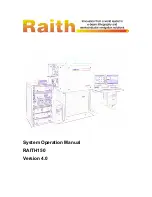
Rev. 4-16a
19
into mechanical energy. It does this by exciting the piezoelectric crystals causing them to move in the
longitudinal direction within the convertor. This change from electrical into mechanical energy causes a
motion that travels through the horn/probe causing the tip to move up and down.
The distance of one movement up and down is called its amplitude. The amplitude is adjustable. Each
probe has a maximum amplitude value. For example, with a 1/8” diameter probe at setting 100%, the
probe will achieve an amplitude of approximately 180μm. At setting 50% the amplitude is
approximately 90μm. Note: this is approximate and not perfectly linear. Qsonica measures the
amplitude of each probe at 100% and these values are published in the brochure.
Amplitude and intensity have a direct relationship. If you operate at a low amplitude setting, you will
deliver low intensity sonication. If you operate at a high amplitude setting, you will have high intensity
sonication. In order to be able to reproduce results, the amplitude setting, temperature, viscosity and
volume of the sample are all parameters that need to remain consistent. The amplitude, not the power,
is most critical when trying to reproduce sonication results.
Power has a variable relationship with amplitude/intensity. For example, sonicating water requires less
wattage when compared to a viscous sample (such as oil). While sonicating both samples at the same
amplitude setting the power/wattage will differ because the viscous sample will require more watts in
order to drive the horn. The viscous sample puts a heavier load on the probe so they system must work
harder to vibrate up and down at the same amplitude setting. The oil may draw double the watts when
operated at the same amplitude as the water sample.
Small fluctuation in the wattage during sonication is normal. Major swings in wattage (+/- 30 watts)
may indicate a problem with the sample, setup or the sonicator itself.

































